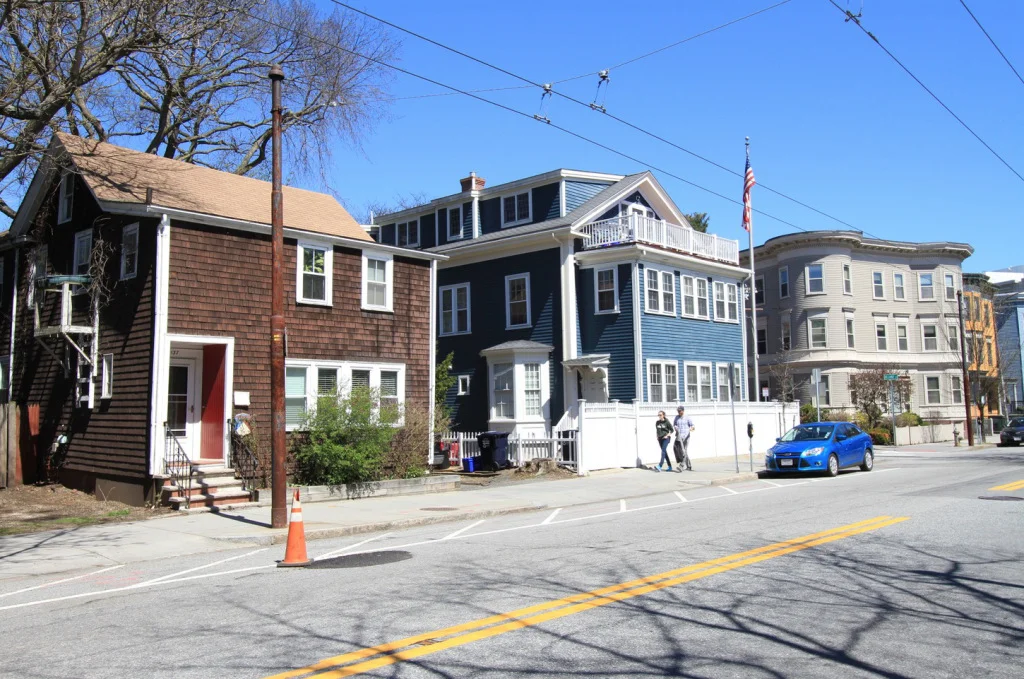The Problem with the Mortgage Interest Deduction
Learn more about how federal housing policy encourages suburban development in our e-book, "Distorted DNA: The Impacts of Federal Housing Policy". (Photo by Johnny Sanphillippo)
The Atlantic recently ran a perceptive article about a seemingly minor and bland federal program: the mortgage interest deduction. But if you’ve been hanging around Strong Towns for any length of time, you can probably guess that a federal program that subsidizes single-family home ownership is anything but bland or minor. It’s actually something that has an impact on the shape of development in our nation as well as access to housing in a country where millions of people face housing insecurity or outright homelessness.
Derek Thompson writes in the Atlantic article:
[In] 2015, the federal government spent $71 billion on the MID, and households earning more than $100,000 receive almost 90 percent of the benefits. Since the value of the deduction rises as the cost of one’s mortgage increases, the policy essentially pays upper-middle-class and rich households to buy larger and more expensive homes. At the same time, because national housing policy’s benefits don’t accumulate as much to renters, it makes it harder for poor renters to join the class of homeowners.
The MID is essentially a federal government program that subsidizes the upper classes and does nothing for (or even harms) everyone else. What’s more, this is one of those federal programs that a lot of people who use it don’t think of as a subsidy. Thompson explains, “60 percent of people who claim the MID say they have never used any government program, ever.”
Thompson quotes Harvard sociologist, Matthew Desmond, as writing:
[A]15-story public housing tower and a mortgaged suburban home are both government-subsidized, but only one looks (and feels) that way.
There’s something very flawed and pointless about pouring billions of dollars into a group of people who are doing quite well for themselves already and are clearly not struggling to find housing or own homes—yet who feel entitled to this deduction and don't recognize it for what it really is. What's more, this sort of subsidy is incentivizing the creation and purchase of single-family homes (the typical residence of choice for the wealthier classes) over other types of housing that may be more beneficial to a neighborhood or city. If this money is going to be spent on housing, wouldn’t it be put to much better use helping low-income families to secure whatever type of housing they need within the market, rather than pouring it into large homes for the wealthy? (Especially given that long-term subsidies have been shown to provide the most effective solution to homelessness and the challenges that come with it.)
Thompson's article proposes one possible solution to the wasteful mortgage interest deduction program:
Rather than scrap the MID entirely, which might be politically impossible, the federal government could cap it at around $500,000 (rather than the current level of $1 million) and use the savings on housing vouchers and support for low-income homebuyers.
As with free parking and roads, it’s hard to take away something people have come to expect as their right, so the article’s author is probably correct that removing the MID would be politically challenging.
Nonetheless, the bottom line is that our views on government involvement in housing and housing subsidies need to be coherent. If you don’t want the federal government involved in housing at all, then you need to recognize that that means doing away with the mortgage interest deduction. It means allowing the market to provide the types of housing that people most demand and relying on local agencies to fill in the gaps for those who still can’t afford homes of their own.
And if you’re enjoying that MID benefit and would like to keep it, then it’s a rather incoherent value system to also oppose other forms of housing subsidy, especially for people who presently lack safe, affordable housing.





This government housing subsidy is more cost-effective and market-based than many programs, but its impacts are limited.